These Public Service Loan Forgiveness applicants have seen their student debt erased
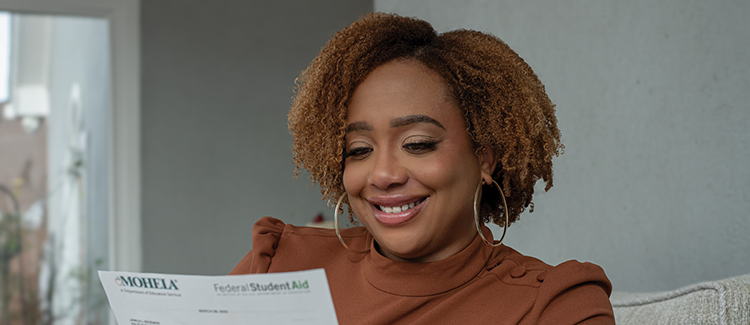
Like many who finally qualified for Public Service Loan Forgiveness, Jamila Wideman kept the MOHELA letter announcing her debt discharge. (Photo by Stan Kaady/ABA Journal)
Renting apartments for years. Going without reliable transportation. Wanting to save for your child’s college education, but having to confront the reality that doing so was financially out of the question because your law school debt payment was more than a car note—or sometimes a mortgage bill.
Many public service attorneys, not unlike millions of Americans who attended college in pursuit of economic mobility, have been in that situation. They graduated and began paying down six-figure loans, but in some cases they were unable to pay daily expenses without going into forbearance. Often, they had an overwhelming feeling that massive student loan debt would travel through life with them.
But many of those attorneys got relief in the past year, thanks to recent changes to the federal government’s Public Service Loan Forgiveness program. PSLF began in 2007 as part of the College Cost Reduction and Access Act under President George W. Bush. The stipulations were that if borrowers working full time for qualified employers made 120 consecutive on-time federal student loan payments for the full monthly amount on the right repayment plan, their remaining balance would be wiped to zero.
See also: How can you qualify for PSLF?
In 2017, when the first group of borrowers became eligible for forgiveness, the denial rate was more than 99%, according to the U.S. Government Accountability Office. Problems along the way included the Department of Education changing the rules about qualifying employers without following federal notice standards. That was challenged by the American Bar Association in 2016, and the case eventually settled. Later, there was a 2018 plan to cut program funding out of the federal budget. Also, there were allegations that federal loan servicers erroneously advised public service employees to enroll in payment plans that did not qualify for PSLF.
And then President Joe Biden’s administration made some changes to the program on the heels of a pandemic-related federal student loan payment pause that ended in September 2023. The plan included temporary and permanent changes that extended PSLF to more borrowers. Here are some of their stories.
Almost Unbelievable: Jamila Wideman was so skeptical about PSLF, she didn’t take the first debt discharge notice seriously
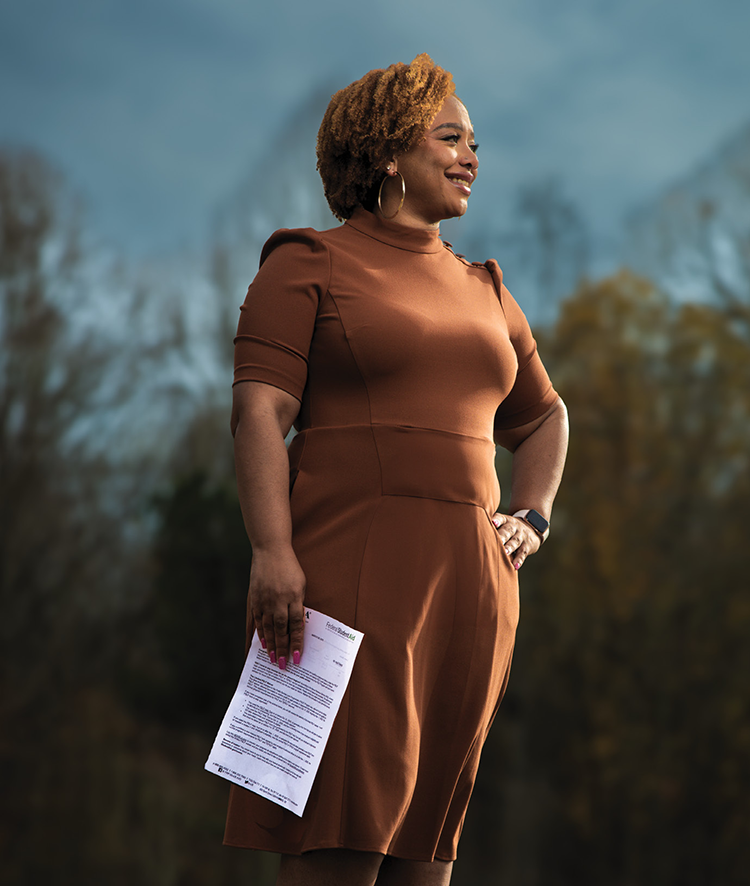 “I was very much planning to die with my loans,” Jamila Wideman says. (Photo by Stan Kaady/ABA Journal)
“I was very much planning to die with my loans,” Jamila Wideman says. (Photo by Stan Kaady/ABA Journal)Jamila Wideman owed enough money in student loans to buy—in some places—a nice house with a lawn, a garage and a porch.
But she doesn’t owe it anymore. Thanks to changes in PSLF, which she finally qualified for under Biden administration changes, Wideman’s balance of $322,447.27 was wiped to zero in April.
“I was very much planning to die with my loans,” she says, deadpan.
Wideman’s student debt, which included money she borrowed for both her undergraduate and law degrees from Mercer University, more than doubled over the years.
Her first job after graduating from Mercer University School of Law in 2008 was at Georgia’s Clayton County Solicitor General’s Office. The salary was $52,000 a year, and her monthly student loan payment was $200. Wideman looked into PSLF when she graduated from law school, but the monthly qualifying payment amount didn’t seem like an option she could afford. She had a young daughter, and they stayed with her parents in the metro Atlanta area to save money.
“I still had to pay for day care and other private loans,” she adds.
She is now an associate with Copeland, Stair, Valz & Lovell. During her time as a government lawyer, Wideman received grants from the John R. Justice Program, an offering from the federal Bureau of Justice Assistance that funds student loan repayment assistance for state prosecutors and public defenders.
The grant amounts would vary, but they went toward her student loan bill as lump-sum payments. Initially, they did not count toward the 120-payment requirement.
Also, Wideman got married while she was a government lawyer. The payment plan she was on merged her and her husband’s salaries together because they filed taxes jointly, and the program wanted to raise Wideman’s monthly payment to $2,000.
“But I said that wasn’t going to happen,” she says. So she paid what she could each month.
Wideman had two more daughters with her husband. The couple pay tuition for all three of the girls’ schools, and they have a mortgage. She heard about the White House’s recent changes to PSLF rules through a friend and applied on the last day, thinking she wouldn’t qualify. But she got a credit monitoring alert in April saying that her balance with the Missouri Higher Education Loan Authority, which manages student loans for the Department of Education and is known as MOHELA, had dropped to zero.
“When I looked into it before, they said that I had two years left to make payments, so I didn’t think it was going to happen for me,” Wideman says.
It turned out that with the new rules, not only did her time in public service count, but her grants were also stretched out over five monthly periods for each year she was awarded one. Those months counted toward the 120 payments she needed to qualify.
Wideman can’t remember what finally led her to check her account, but she says it was while her family was driving home from a daughter’s softball game. She logged into the MOHELA website on her phone and saw that it was true: Not only were her loans completely forgiven, but she also had gotten a refund for overpayment.
“I just fell to my knees and said, ‘Praise God,’ because like I said, I very much intended to die with those loans.”
Smiles All Around: After Adelle Settle’s $255K debt was discharged, her MOHELA account put on a happy face
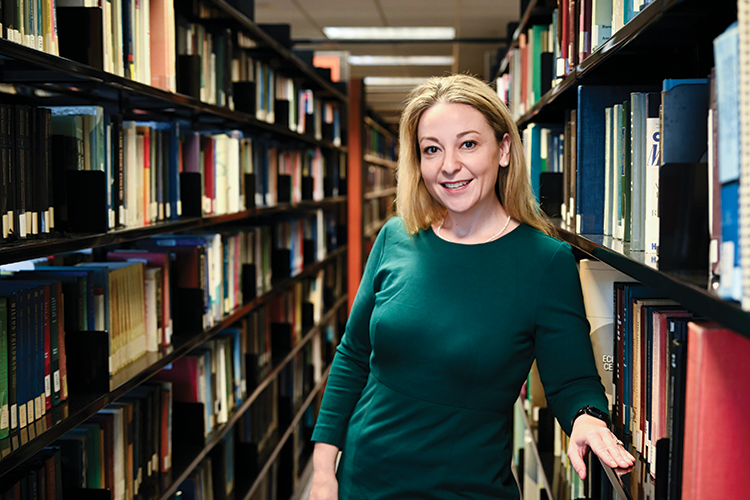 “I logged into my account, and they have this very funny thing: You’ll see a smiley face on your account, and it’ll say, ‘Your account is in good standing. The balance of your loans is zero,’” Adelle Settle says. (Photo by David Hills Photography/ABA Journal)
“I logged into my account, and they have this very funny thing: You’ll see a smiley face on your account, and it’ll say, ‘Your account is in good standing. The balance of your loans is zero,’” Adelle Settle says. (Photo by David Hills Photography/ABA Journal)
Adelle Settle keeps reminders of accomplishments on her home office wall. Next to the JD she received from George Mason University’s Antonin Scalia Law School is a January 2023 letter from the U.S. Department of Education’s loan servicer verifying that her student loans were forgiven, leaving her with a zero balance.
Settle graduated with $150,000 in student debt. By the time the debt was forgiven, it had grown to $255,000.
“It was literally quite life-changing, I would say, to have that taken away,” says Settle, who works in employment law for the Department of Defense.
The 2010 law school graduate now has flexibility to plan more family vacations with her husband and daughter. She can also sock away college money for her daughter, who hopefully will not be six figures behind the eight ball like Settle was after graduation.
Like many borrowers, she found PSLF guidance from the government was scant and often looked to Facebook for advice. She started to lose faith after reading social media posts from people who were denied, and she feared Congress might change the program.
And then one day, a cute icon showed up on her MOHELA account.
“I didn’t get a message or anything like that. I logged into my account, and they have this very funny thing: You’ll see a smiley face on your account, and it’ll say, ‘Your account is in good standing. The balance of your loans is zero,’” Settle recalls.
She shared the news in Public Service Loan Forgiveness Program Support, a Facebook group with more than 179,000 members.
At the start of her legal career, Settle was living in the Washington, D.C., area and worked for the Social Security Administration, earning $60,000 a year.
“I wasn’t making very much, so I sought a way to pay a lower amount. In error, I guess, they told me that I could either pay this very high amount, which was a couple thousand dollars a month, or I could go into forbearance, and there was no middle ground,” Settle says.
She went into forbearance for three years, and as a result, her debt was recapitalized. That tacked on more than $100,000 to her balance. In 2013, she started paying $850 a month toward her student loan. Those payments qualified for PSLF, but that barely made a dent until March 2020, when President Donald Trump’s administration froze student loan payments.
Some of Settle’s law school friends make significantly more money than she does. But she loves public interest law and hopes exorbitant loans don’t scare others away from doing it.
“I [was] willing to make that trade-off, but only because eventually I hoped that these loans would go away,” Settle says.
Long-Term Benefit: Jessica Quincosa thinks PSLF will keep lawyers in public interest law
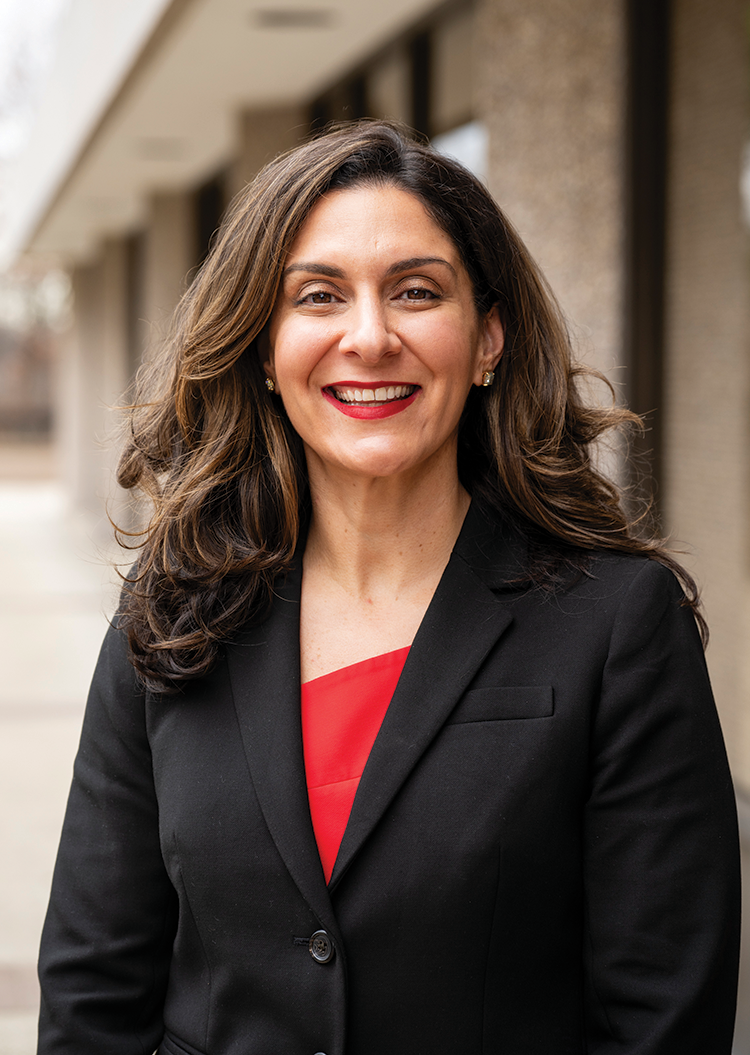 “I think for people who are interested in public service, this will help cement that this is the right thing to do,” Jessica Quincosa says. (Photo by David Hills Photography/ABA Journal)
“I think for people who are interested in public service, this will help cement that this is the right thing to do,” Jessica Quincosa says. (Photo by David Hills Photography/ABA Journal)When Jessica Quincosa found out she had her student loans discharged through PSLF, some of the first people she informed were her direct reports.
“I told them in a staff meeting,” says the Maryland lawyer, who serves as the executive director of Community Legal Services of Prince George’s County. “I was like, ‘You all need to apply, and I will verify it for you.’”
Quincosa, a 2003 New England Law | Boston graduate, started with $100,000 in student debt from both college and law school. The consolidated federal loans she had did not qualify for PSLF, so even when she got a qualifying job in 2011, she did not apply. By 2022, the debt was at $60,000 and her monthly payment was $346.
Quincosa is a first-generation college student whose parents emigrated from Cuba to the U.S. She knows others like her are in a crunch, and they often share the same story: years of forbearance, low salaries, dreams of homeownership and starting a family deferred, along with the seeming inability to get out from under the weight of their massive debt.
“I think it’s incredibly stressful, and in the meantime, the price of everything has gone up. My staff are legal service attorneys, so I can only imagine how stressed they are,” Quincosa says.
In 2021, the Biden administration temporarily lifted previous repayment stipulations.
“When the application opened in October of 2021, I applied on the first Friday,” Quincosa says. “I wasn’t taking any chances that [the Biden administration] would change it.”
She spent five years of her career in forbearance while doing document review for private law firms, and she wasn’t confident she’d made 120 payments. But the federal loan pause included in the 2021 Consolidated Appropriations Act counted toward that, provided one had certified eligible employment for the same time period.
As executive director of Community Legal Services of Prince George’s County, Quincosa couldn’t certify her own employment. So she got her bookkeeper to do it. She also called the Human Resources Department at Maryland Legal Aid to verify that she had worked there for six years.
In March 2022, Quincosa found out that her student debt had been wiped out under PSLF. For other borrowers, loan payments started back up in October. As the date drew closer, she says, employees asked her to sign off on employment verifications, which include the organization’s federal identification number and the individual’s dates of employment.
Quincosa’s husband is a public service attorney who works for the Social Security Administration. He is paying down his loans and waiting for them to be discharged under PSLF.
The idea that all lawyers make huge salaries is a misunderstanding about the legal profession, Quincosa says. Sometimes attorneys who make big differences in people’s lives, such as public defenders, prosecutors and legal aid lawyers, get a sense of satisfaction from doing what they think is right for the greater good, she explains—and they take on large amounts of debt to be public servants.
“I think for people who are interested in public service, this will help cement that this is the right thing to do, especially for folks on the fence about it,” she says.
#ICYMI: A social media post led law prof Marsha Griggs to seek forgiveness for her student debt
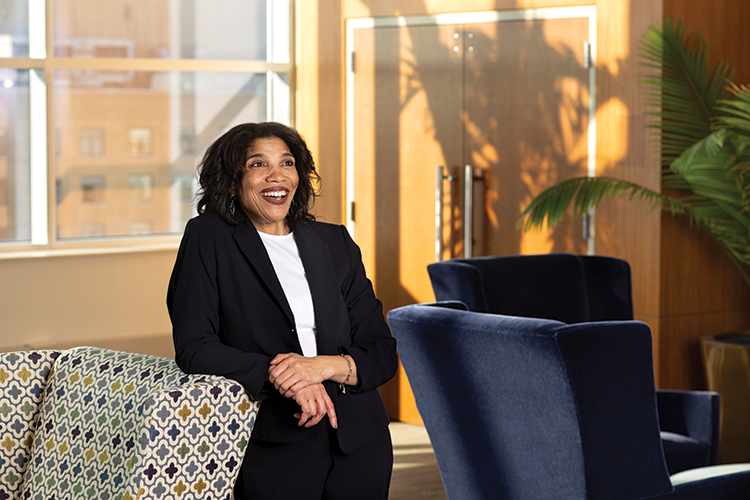 “I couldn’t afford to make my payments, so I was deferring and getting capitalized interest,” Marsha Griggs says. (Jeannie Liataud Photography/ABA Journal)
“I couldn’t afford to make my payments, so I was deferring and getting capitalized interest,” Marsha Griggs says. (Jeannie Liataud Photography/ABA Journal)
Marsha Griggs was riding in the backseat of a Lyft, on her way out for a night of fun, when she got a notification on her phone that changed her life.
It was from MOHELA, alerting her that she had received PSLF. She had applied during the pandemic, and her $243,800 balance was now zero.
“And I was asking my Lyft driver, ‘Is this real?’” she says, laughing.
Public Service Loan Forgiveness didn’t exist when Griggs graduated from the University of Notre Dame Law School in 1996; otherwise, she would have signed up for it. She graduated with just under $50,000 in law school debt and was accepted into the U.S. Attorney General’s Honors Program. The starting salary was $30,000.
“I couldn’t afford to make my payments, so I was deferring and getting capitalized interest,” she explains.
According to her, there was no law school exit interview about student loans. The do’s and don’ts of accruing interest and forbearance were never shared with her.
For-profit debt consolidation companies solicited Griggs, promising that consolidating her school loans could reduce her monthly payments. The loans remained with the federal government after the consolidation was completed.
For years, Griggs teetered between actively repaying her loans and being in forbearance. She doesn’t remember having a payment of less than $500 a month, and sometimes she paid as much as $1,800. She eventually transitioned into academia, working at Thurgood Marshall School of Law at Texas Southern University and at Washburn University School of Law in Kansas.
In July, she took a job as a tenured associate professor at Saint Louis University School of Law. Decades into her career, with her son and daughter both in college, Griggs’ original loan with capitalized interest had ballooned by more than $190,000.
“I look at the bill and it’s twice the size it was, and you just cannot catch up,” she says.
After seeing a legal scholar post something on social media about how it was real and encouraging other lawyers with huge loans to apply, Griggs thought about PSLF. She wishes more people had openly shared information about the program, particularly for first-generation college graduates like her.
Griggs doesn’t know if student debt will dissuade people from attending law school, but she does think the amounts will make it harder for the profession to become more inclusive. “Because just like my story, first-gen folks, when they face this hurdle, some of them might say, ‘No, I can’t take $30,000 a year because I have to make loan payments.’ Or, ‘I’ve got this family to provide for, so I have no option but to go into private practice,’” she says.
This story was originally published in the February-March 2024 issue of the ABA Journal under the headline: “The Power of Forgiveness: These Public Service Loan Forgiveness applicants have seen their student debt erased.”
Ira Porter is a journalist and author. He currently writes for the Christian Science Monitor and has written for other publications, including the Philadelphia Inquirer and the News Journal.
Write a letter to the editor, share a story tip or update, or report an error.


